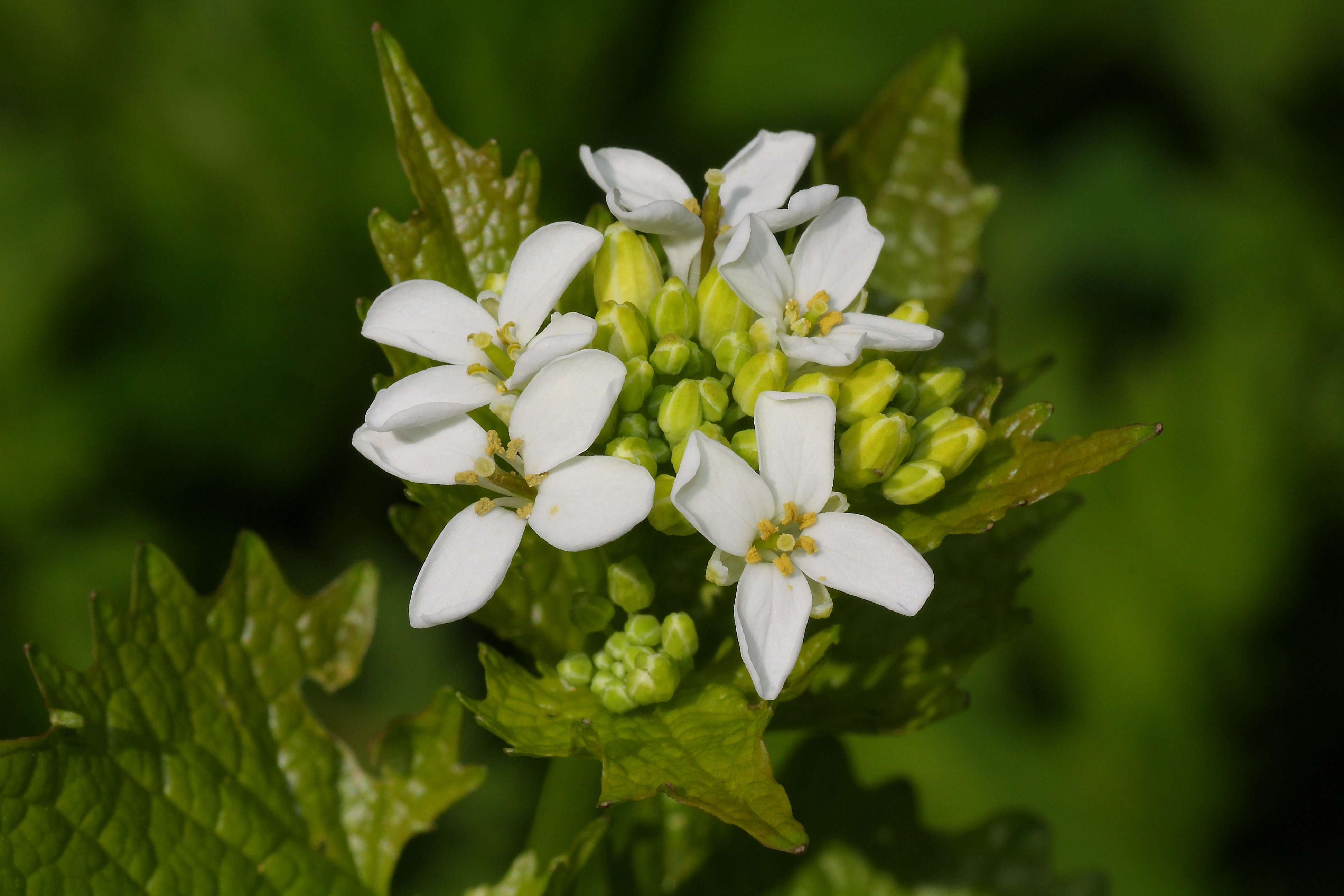
GARLIC MUSTARD |
ALLIARIA PETIOLATA |
 |
| Fig 1 |
DESCRIPTION: Height up to 120cm. This member of the Brassicaceae family is one of my favourite spring flowers with its four petalled pure white flowers contrasting superbly with the lush green foliage that always looks so full of life. The heart-shaped leaves themselves smell like garlic when crushed (a mild defence against insects). As a biennial the first years growths forms a tight clump of wrinkly rounded leaves whereas in the second year the upright flowering shoots are borne that hold aloft the dense clusters of eye-catching flowers. The seeds pods are erect and contain several seeds. Sometimes a good specimen will be borne from a long slender tap-root which surprisingly tastes of Horse Radish. DISTRIBUTION: Widespread throughout. HABITAT: Hedgerows are usually the chosen place for this welcome plant but also look out for it on wasteland and besides riverbanks and the edges of damp woodland. FLOWERING TIME: May to June. EXTRA NOTES: The genus name Alliaria refers to the garlic-like odour of the crushed leaves. Common names include Garlic Root, Hedge Garlic, Sauce-alone, Jack-in-the-bush, Penny Hedge and Poor Man's Mustard. Garlic Mustard was once used medicinally as disinfectant and a diuretic and was sometimes used to heal wounds. The seed pods can be eaten as a wayside snack, the leaves as a sandwich filler and the flowers are a nice addition to a salad. All are high in vitamin A and C. The plant has been used as an antiseptic poultice on ulcers and if one chops up the roots, heats in oil and rubs on the chest it can relieve bronchial symptoms. The leaves can allegedly be taken to promote sweating and relieve the symptoms of asthma and eczema. |